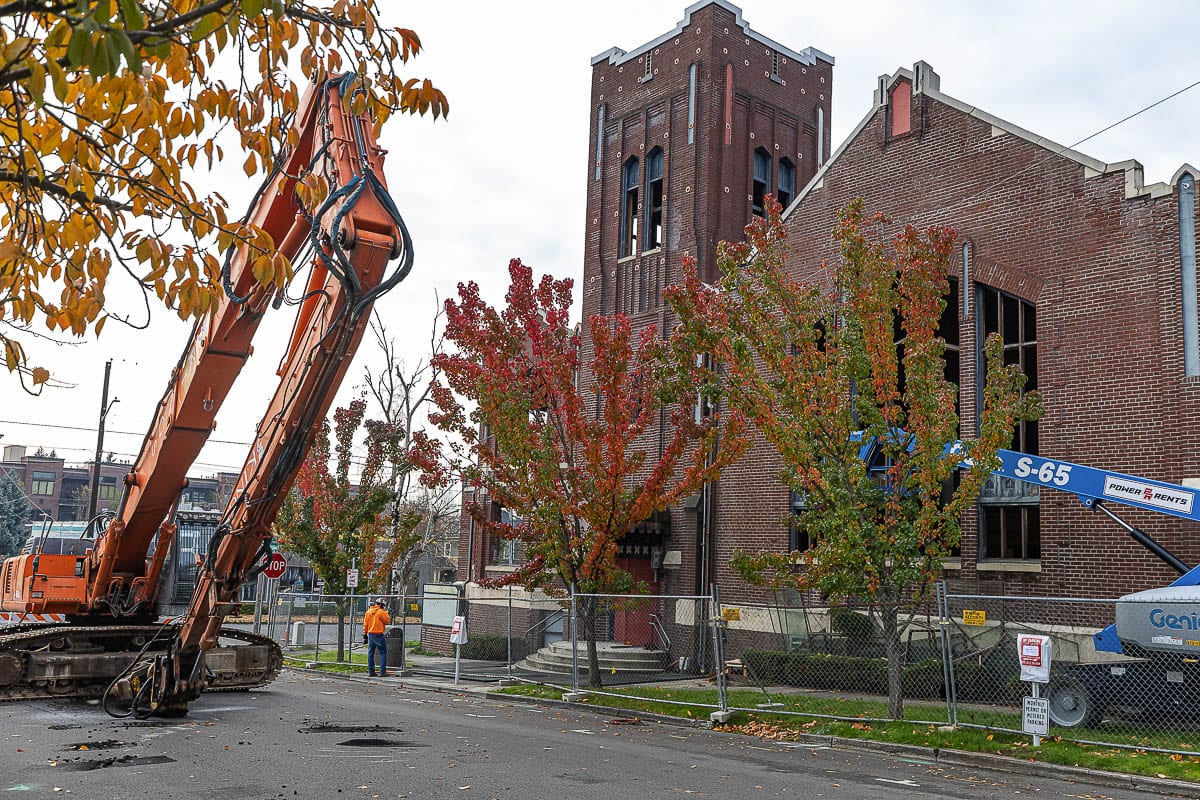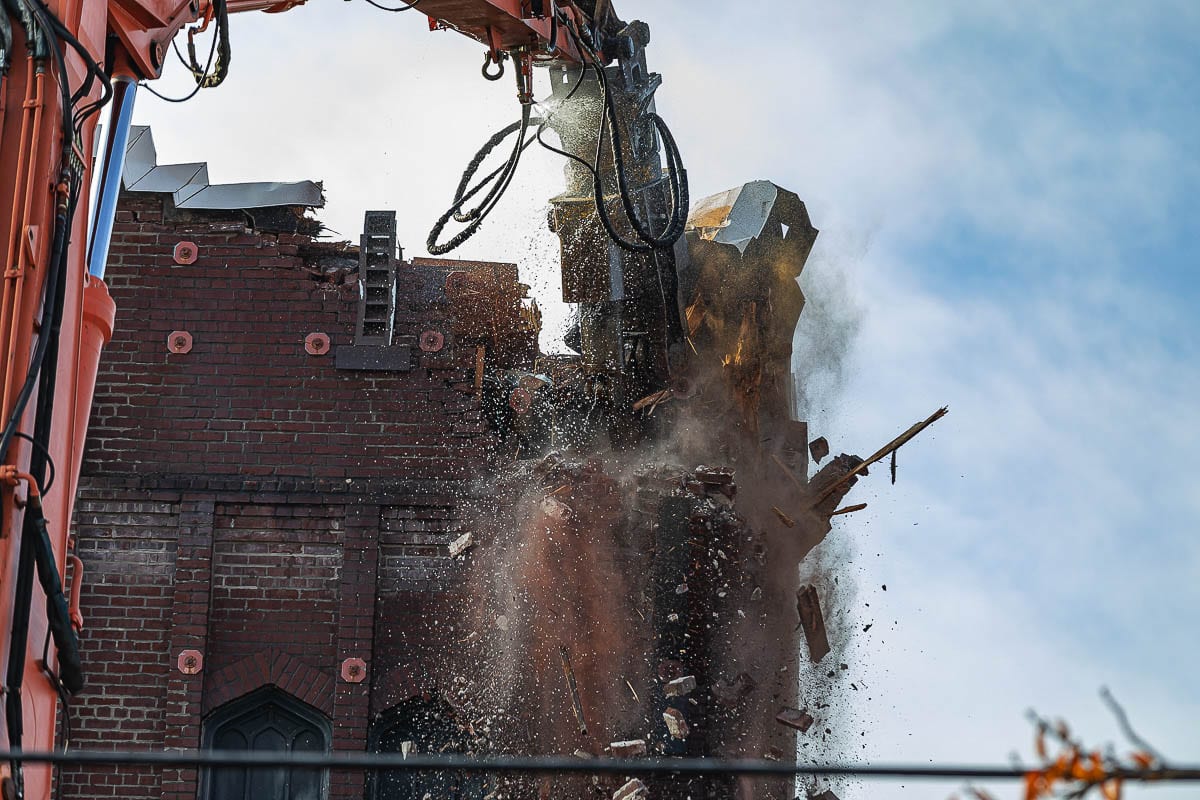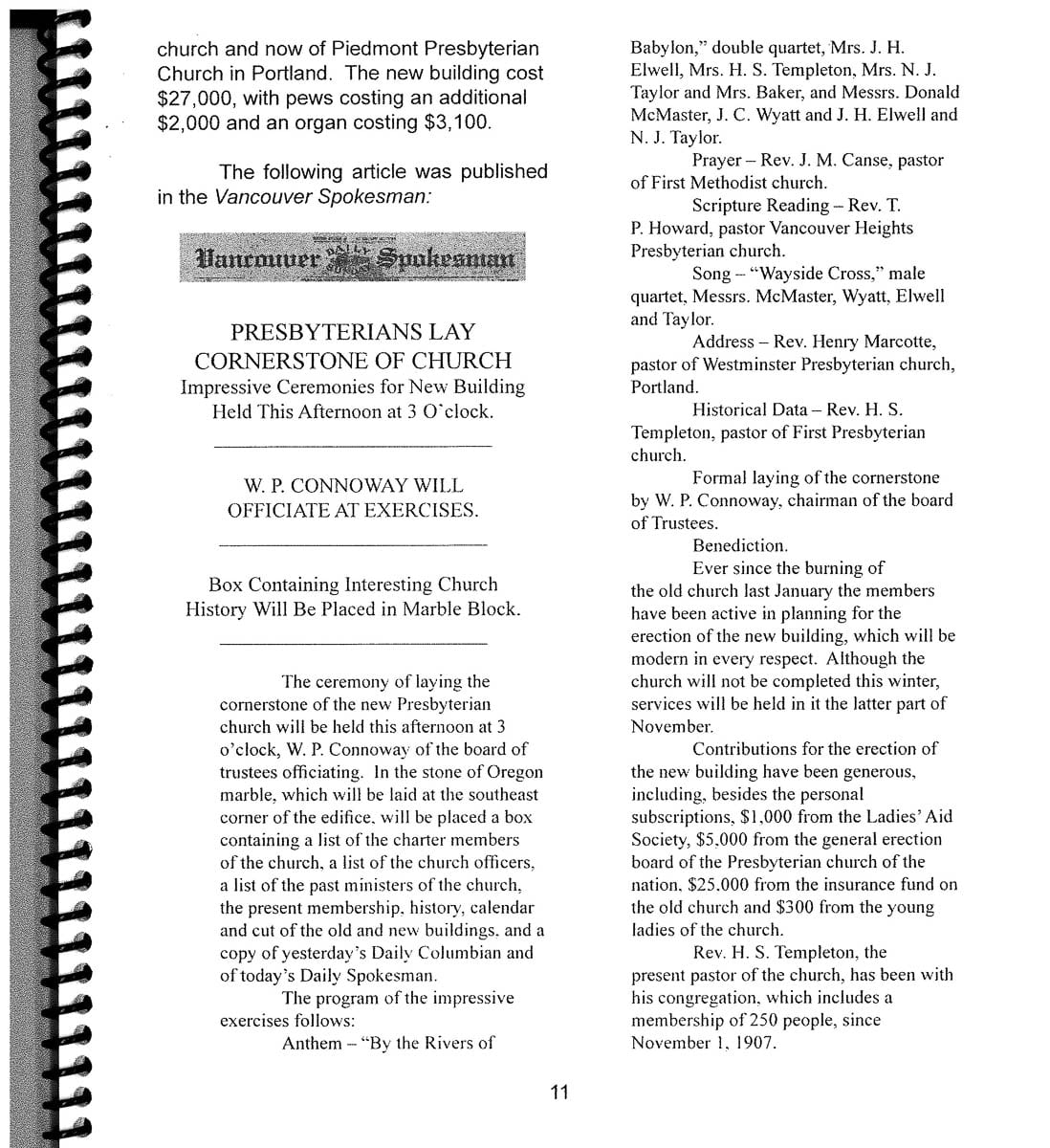Workers tearing down the 1908 building at 11th and Esther learned it had been built on the burned remains of the original 1885 structure
VANCOUVER — Miracles and churches go hand-in-hand. But, as crews with 3 Kings Environmental began the work of tearing down the oldest church building in downtown Vancouver, they discovered that the greatest miracle of all may have been the fact the 108-year-old structure has remained standing all these years.
The building at 11th Street and Esther, most recently home to the west side campus for New Heights Church, was built in 1912, four years after a fire destroyed the original 1885 church.

After bricks began crumbling and falling from the building’s facade onto the sidewalk below, New Heights brought in a contractor to tell them if the old building could be made safe.
The contractor quoted them an estimate of $6.5 million, which was more than the church was equipped to handle.
“A structure like that, in good shape, is not worth any more than one, one-and-a-half million dollars,” says Michael Lynch, the son of Ed and Dollie Lynch who now runs their philanthropic foundation. Their estate ended up buying the property from New Heights for $3.2 million.
Lynch says the same contractor took another look at the building for them, and revised their estimate for renovation up to more than $12 million.
“That assumed the exterior walls were salvageable,” Lynch said on Friday. “We learned (Thursday), it’s a bad assumption.”

As crews began tearing through the ancient brick walls with a massive machine whose claw-like appendage would make the aliens of Toy Story swoon, they began to realize long-held assumptions about the building were incorrect.
“Not having good records from those days, we assumed the church had burned to the ground, and they simply built a new church on the site,” says Lynch. “And that turned out to be false.”
What they discovered inside the walls were timbers with scorch marks, and clear signs that at least three of the walls contained bricks from the original building.
“They kept and salvaged the frame of the old church,” Lynch chuckles, “three sides of it, and they applied the brick to those walls.”
Crews also discovered that a number of the timbers in the basement of the church, which everyone had just assumed were painted black, actually had been burned in the 1908 fire.
“They were just burned on the outside, but quite a few of them were in bad shape,” Lynch says.
The bricks used to rebuild the church were “not Hidden bricks,” says Lynch, referring to the well-regarded Vancouver company whose bricks were used in the Academy building, as well as St. James Cathedral, and are now highly sought after by collectors.
“Frankly, they’re cheaper alternatives,” Lynch says of the material used in the old church. “And they’re soft material. And the mortar is soft, so there’s just not a lot of good stuff.”

The walls were also unreinforced, and Lynch says the roof was largely “cobbled together,” as it appears the church had run low on funds during the reconstruction project.
“After learning that, it really made sense why First Presbyterian left the church in the early 50s,” says Lynch. “Doesn’t seem like it was very old at that point in time, but because the basic structure, the basement and the framing, were really built in 1885, they knew you couldn’t really repair it.”
Even so, 3 Kings Environmental took pains with the old stained-glass windows, salvaging all but one of them. The company agreed to buy the windows as part of the project, though one is being given to the current First Presbyterian Church, now located across from Kiggins Bowl on 43rd and Main Street. They plan to use it for a display piece.
Twenty ancient and massive wooden pews were also removed from the building and donated to Friends of the Carpenter, which plans to repurpose most of them.
The bricks will be ground up, and used as an asphalt paver base, since the clay material packs well.
After the main structure of the building has been demolished and sorted, crews will carefully dig by hand at the cornerstone, hoping to find a time capsule that was buried “in Oregon marble,” back in 1908 when construction on the new building began.

The capsule, once recovered, will also be returned to First Presbyterian Church.
Lynch says he hopes they make a display out of the contents, and then rebury the container so that “some other fool can dig (it) up in 100 years.”
As for the future of the site, Lynch says that’s still undetermined.
“We had to get the safety hazard taken care of and that we’ve done,” he says. “And now we’ll end up with just a nice gravel lot. That slopes.”
Lynch says the Community Foundation of Southwest Washington has been in contact with various nonprofits who might be interested in building on the site, but most of them are in a holding pattern right now due to the impact of the COVID-19 pandemic.
“We’re kind of in a hurry up and wait situation,” says Lynch, “and that’s okay.”
And even as people mourn the loss of a piece of Vancouver’s history, they can perhaps take some solace in knowing that every church service in the building was a minor miracle.
A miracle the old building didn’t crumble around their ears.




